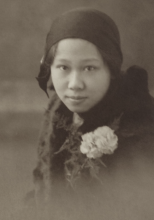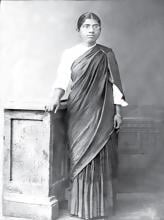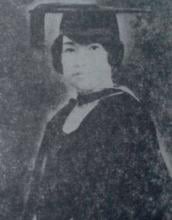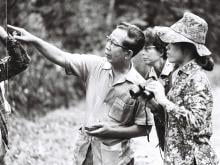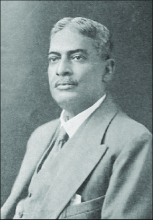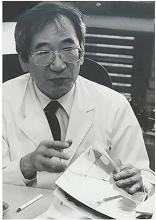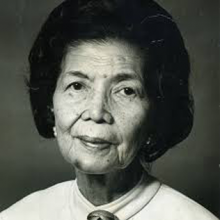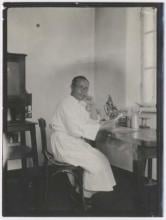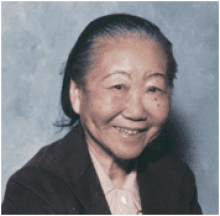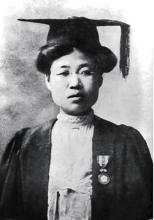Medicine
News

30 Nov 2005
The meetings included the Conference of Parties (CoPs) of the Wetlands and Migratory Species conventions and a round table discussion on Avian Influenza where two important resolutions were passed.

30 Nov 2005
This study has found that oleic acid, commonly found in palm oil and olive oil may have a positive effect in combating osteoporosis by enhancing bone formation.
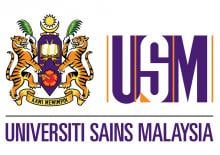
30 Nov 2005
DataPap is the first database system that gathers patient's details, medical report and Pap smear images in a single database. It also has intensive search facilities, sophisticated image processing and automatic diagnostic functions.

27 Nov 2005
Scientists have devised a way to view how autoimmunity is averted, Polycystic kidney disease (ADPKD) is caused by two mutated genes working together - researchers unravel how these mutated genes operate.

27 Nov 2005
Adipose or fatty tissue appears to represent a potentially clinically useful source of cells for cellular therapy, tissue engineering and gene transfer applications

27 Nov 2005
The publication contains information on 133 native species distributed in the area, including names, common characteristics, taxonomic description, and uses of each species.

27 Nov 2005
Kaiser Jamil, an internationally renowned biotechnologist from India, has been elected the new president of the Third World Organization for Women in Science (TWOWS).

23 Nov 2005
A controversial vaccine that was the subject of a halted trial to prevent cognitive decline in Alzheimer's patients could have the potential to be reformulated to eliminate its toxicity while retaining the benefits.

23 Nov 2005
Summaries of newsworthy papers from Nature Vol.438 No.7067 Dated 24 November 2005 including How cells stay calm inside when it's chaotic outside; In (self) defence of sea squirts and Stop in their tracks

23 Nov 2005
A practical approach for the isolation and molecular identification of bird flu virus from duck cloaca swabs submitted during the surveillance of bird flu in Malaysia.

20 Nov 2005
The site and moment when a gene carrier will release its cargo and endow the cells of a specific tissue with the correspondent protein, can be controlled simply with a low-power laser

20 Nov 2005
NATURE AND THE NATURE RESEARCH JOURNALS PRESS RELEASE - For papers published online on 20 November 2005

16 Nov 2005
Summaries from TWAS Research Updates – No. 1, November 2005

16 Nov 2005
In the present case however, the bruises were well discernible even after 49 days of its production. This case proves that a medicolegal expert must base his opinion regarding the age of bruise with great care.

16 Nov 2005
Summaries of newsworthy papers from Nature. Vol.438 No.7066 Dated 17 November 2005 including Optical telecommunications: Meaning from chaos and Development: A starring role for SCL in astrocytes

13 Nov 2005
Researchers from Universiti Sains Malaysia bagged 3 gold and 3 silver medals at the International Trade Fair (Ideas-Inventions-New Products) held at the Nuremberg Exhibition Center, Germany at which 600 products were showcased.

13 Nov 2005
Only one trained healthcare provider is available for every 16 villages. Although, more than 70% of India's population lives in rural areas, only 20% of the total hospital beds are located in rural area.

13 Nov 2005
NATURE AND THE NATURE RESEARCH JOURNALS PRESS RELEASE - For papers published online on 13 November 2005

10 Nov 2005
A common variant of a gene involved in inflammation is associated with a significantly increased risk of heart attack in Americans of European and of
African descent.

09 Nov 2005
The reconstructed version of the flu virus that caused the 1918 world pandemic will be mailed to registered labs in the US that ask for it; A US patent has been granted for an antigravity device. Watchdogs can sometimes provoke scientific misconduct

09 Nov 2005
Despite the improvement in newborn health care services neonatal and infant mortality rate has not significantly declined. In India 26 million babies are born every year, out of which 1.2 million die before completing the first four weeks of life.

09 Nov 2005
Nature press release - Vol.438 No.7065 Dated 10 November 2005 - Wafer-thin graphite is a quantum conundrum; Gravity tractor could move dangerous asteroids

09 Nov 2005
The commonest method for committing homicide in Benin City was by firearms, while ingestion of poisons, particularly ‘Otapiapia’ an insecticide, is the commonest method for committing suicide in this region.

06 Nov 2005
Quality control and standarization of herbal and other natural products are the fundamental step towards developing and modernizing such products into evidence based medicines.

06 Nov 2005
Nature and the Nature research journals press release - For papers that will be published online on 6 November 2005

03 Nov 2005
WCS has played a key role in the vaccine currently being developed for avian flu, using birds our vets recently sampled in Mongolia. Drs. Billy Karesh (expedition leader to Mongolia in August) and Bob Cook are available for interviews on this breakthrough

02 Nov 2005
Campylobacter jejuni is one of the major causes of diarrhoea in human and animals especially in developed countries. EZ Campy DNA kit was designed and developed to detect for Campylobacter jejuni within 3 hours.

02 Nov 2005
Highlights from Nature, Vol.438, No.7064 Dated 03 November 2005 including Bacteria use light to drive 'animal' metabolism; Bridging a wobbly gap

01 Nov 2005
Doctors think they have hit on a way to double supplies of the scarce antiviral drug Tamiflu, reports a news exclusive in Nature this week.
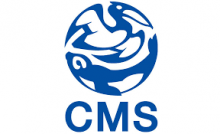
30 Oct 2005
Discussions on avian influenza dominated this inter-governmental conference that took place from 23-27 October.
Researchers
Sorry, no researchers coming up for this topic.
- « first
- ‹ previous
- 1
- 2
- 3
- 4
Giants in history
Michiaki Takahashi (17 February 1928 – 16 December 2013) was a Japanese virologist who developed the first chickenpox vaccine.
Irene Ayako Uchida’s (8 April 1917 – 30 July 2013) strides to understand genetic diseases such as Down syndrome paved the way for early screening of chromosomal abnormalities in foetuses.
Baron Kitasato Shibasaburo (29 January 1856 – 13 June 1931) was a Japanese physician and bacteriologist whose work led to a new understanding of preventing and treating tetanus, diphtheria and anthrax.
Maggie Lim (5 January 1913 – November 1995) was a Singaporean physician who promoted family planning and expanded the access to clinics to improve the quality of life for mothers and children in Singapore’s early days.
By isolating soil microorganisms and studying the compounds they produce, Satoshi Omura (born 1935) discovered almost 500 organic compounds with unique properties that were produced by these microorganisms, including many new antibiotics.
The founder of the Adyar Cancer Institute in India, Muthulakshmi Reddy (30 July 1886 – 22 July 1968), fought to uplift women and girls from impoverished situations.
Chinese-American virologist and molecular biologist Flossie Wong-Staal (27 August 1946 – 8 July 2020) was the first scientist to clone HIV and determine the function of its genes.
Maharani Chakravorty (1937 – 2015) was one of India’s earliest molecular biologists whose research paved the way for advances in the treatment of bacterial and viral infections.
Archana Sharma (16 February 1932 - 14 January 2008) conducted research into plant and human genetics that expanded the understanding of both botany and human health. In relation to botany, she uncovered the means by which asexually-reproducing plants evolve into new species.
The first Thai woman to receive a degree in medicine, Margaret Lin Xavier (29 May 1898 – 6 December 1932), is best remembered for her compassion towards her less privileged patients.
In 1915, pathologist Katsusaburo Yamagiwa and his research assistant Koichi Ichikawa became the first to prove that chronic exposure to chemicals can cause cancer.
In 1915, Koichi Ichikawa along with pathologist Katsusaburo Yamagiwa became the first to prove that chronic exposure to chemicals can cause cancer.
Husband and wife team, Kimishige (3 December 1925 – 6 July 2018) and Teruko Ishizaka (28 September 1926 – 4 June 2019) discovered the antibody class Immunoglobulin E (IgE) that triggers allergic reactions. They also discovered that IgE antibodies attach to white blood cells, known as mast cells, releasing histamine, which causes allergic reactions.
Husband and wife team, Kimishige (3 December 1925 – 6 July 2018) and Teruko Ishizaka (28 September 1926 – 4 June 2019) discovered the antibody class Immunoglobulin E (IgE) that triggers allergic reactions. They also discovered that IgE antibodies attach to white blood cells, known as mast cells, releasing histamine, which causes allergic reactions.
Japanese chemist Takamine Jokichi (3 November 1854 – 22 July 1922) founded the Tokyo Artificial Fertilizer Company, where he isolated a starch-digesting enzyme (named takadiastase) from the fungus Aspergillus oryzae.
Ground-breaking cancer researcher Kamal Jayasing Ranadive (8 November 1917 – 11 April 2001) advanced the understanding of the causes of leukaemia, breast cancer and oesophageal cancer through the use of animal models. She was also among the first to recognise how susceptibility to cancer is linked to tumour-causing interactions between hormones and viruses.
The research of Filipino pharmaceutical chemist Luz Oliveros-Belardo (3 November 1906 – 12 December 1999) focussed on essential oils and other chemicals derived from native Philippine plants.
Thai physician and conservationist Boonsong Lekagul (1907 – 1992) made major contributions to the preservation of his country’s wildlife.
Indian scientist and physician Upendranath Brahmachari (19 December 1873–6 February 1946) is best known for creating a drug called Urea Stibamine, used to safely and reliably treat visceral leishmaniasis (or Kala-azar), a severe infection caused by the Leishmania parasite.
Filipino chemist and pharmacist Manuel A. Zamora (29 March 1870 – 9 July 1929) is best remembered for his discovery of the tiki-tiki formula to combat beriberi, a disease caused by Vitamin B1 deficiency.
Korean parasitologist Seung-Yull Cho (16 November 1943 – 27 January 2019) is remembered largely for his pioneering works to control infections caused by helminthic parasites and his contribution to journal publishing.
Fe Villanueva del Mundo (27 November 1911 – 6 August 2011) was a Filipina paediatrician who founded the Philippines’ first paediatric hospital.
After witnessing death and suffering as a youth in his home village during World War II, Nguyễn Tài Thu (6 April 1931 – 14 February 2021) set his sights on alleviating pain by becoming a doctor. After studying Traditional Chinese Medicine in China in the 1950s, Thu returned to Vietnam to serve in military hospitals. Eventually, he became the country’s foremost practitioner of acupuncture, a technique he first learned by inserting needles into himself.
Minoru Shirota (April 23, 1899 – March 10, 1982) was a Japanese microbiologist who invented the popular fermented drink Yakult.
Wu Lien-teh (10 March 1879 – 21 January 1960) was a Malaysian-born doctor who invented a mask that effectively suppressed disease transmission. Winning the prestigious Queen’s Scholarship enabled Wu to become the first Chinese student to study medicine at the University of Cambridge.
David T. Wong (born 1936) is a Hong Kong-born American neuroscientist who is best known for discovering the antidepressant drug fluoxetine, better known as Prozac.
Indian organic chemist Asima Chatterjee (1917 to 2006) studied the medicinal properties of plant products, especially compounds known as vinca alkaloids.
Chika Kuroda (24 March 1884 – 8 November 1968) was a Japanese chemist whose research focussed on the structures of natural pigments.
Umetaro Suzuki (7 April 1874 – 20 September 1943) was a Japanese scientist best remembered for his research on beriberi, a disease caused by vitamin B1 deficiency, characterized by limb stiffness, paralysis and pain.
Salimuzzaman Siddiqui (19 October 1897 – 14 April 1994) was an artist and chemist from Pakistan whose research focused on natural products from plants.
Barry Paw (29 August 1962 – 28 December 2017) was a biologist and oncologist who discovered several novel genes and their functions in red blood cells.
Syed Qasim Mehdi (13 February 1941 – 28 September 2016) was a Pakistani molecular biologist who was a founding member of the Human Genome Diversity Project (HGDP), which assessed human diversity by studying human migration, mutation rates, relationships between different populations, genes involved in height and selective pressure.
Tsai-Fan Yu (1911 – 2 March 2007) was a Chinese-American physician and researcher who was the first female full professor at Mount Sinai School of Medicine. She discovered that gout, a condition characterized by the painful inflammation of joints, was caused by elevated levels of uric acid in the bloodstream.
Min Chueh Chang (10 October 1908 – 5 June 1991) was a Chinese-American biologist who studied fertilization in mammalian reproduction.
A Japanese surgeon, Tetsuzo Akutsu (20 August 1922 – 9 August 2007) built the first artificial heart capable of keeping an animal alive.
Ogino Ginko (3 March 1851 – 23 June 1913) was the first registered female doctor to practise modern medicine in Japan.
Esther Park (1877-1910), born Kim Jeom-dong, was the first female Korean physician to practise modern medicine in Korea and trained the first generation of Korean female doctors.





